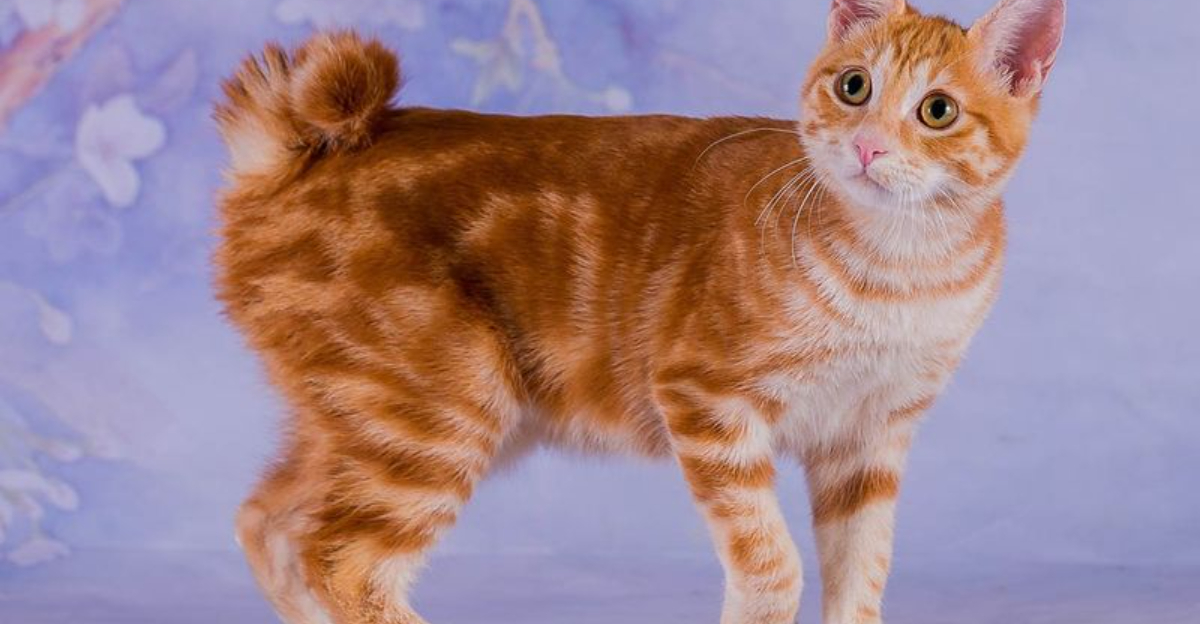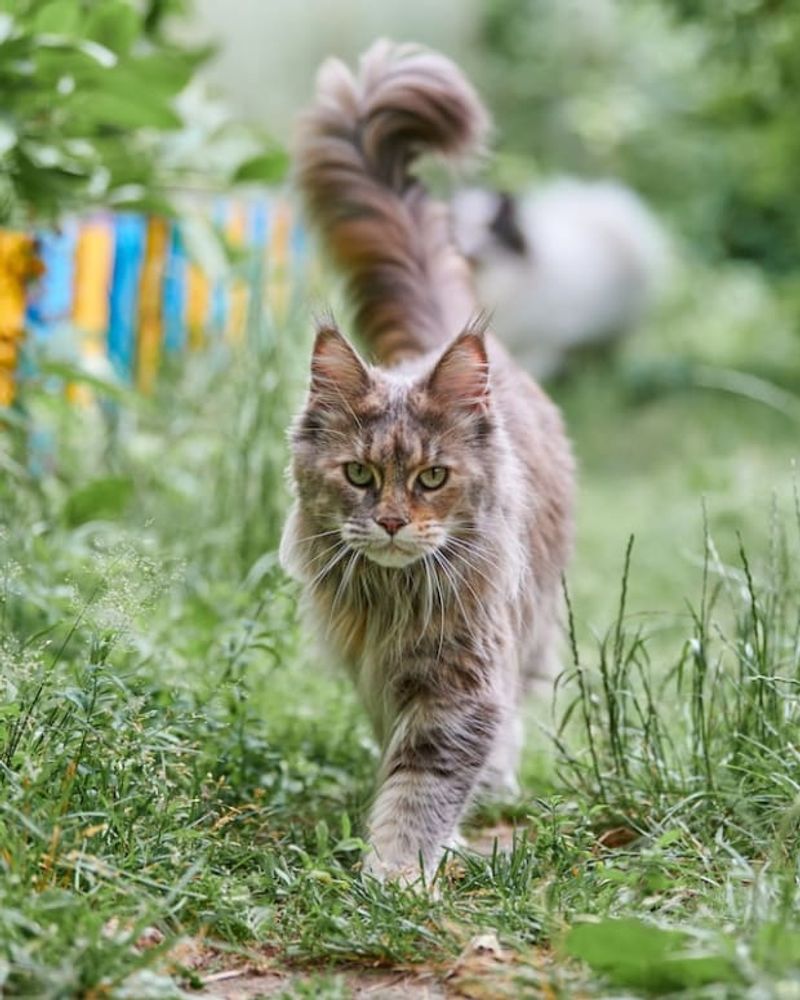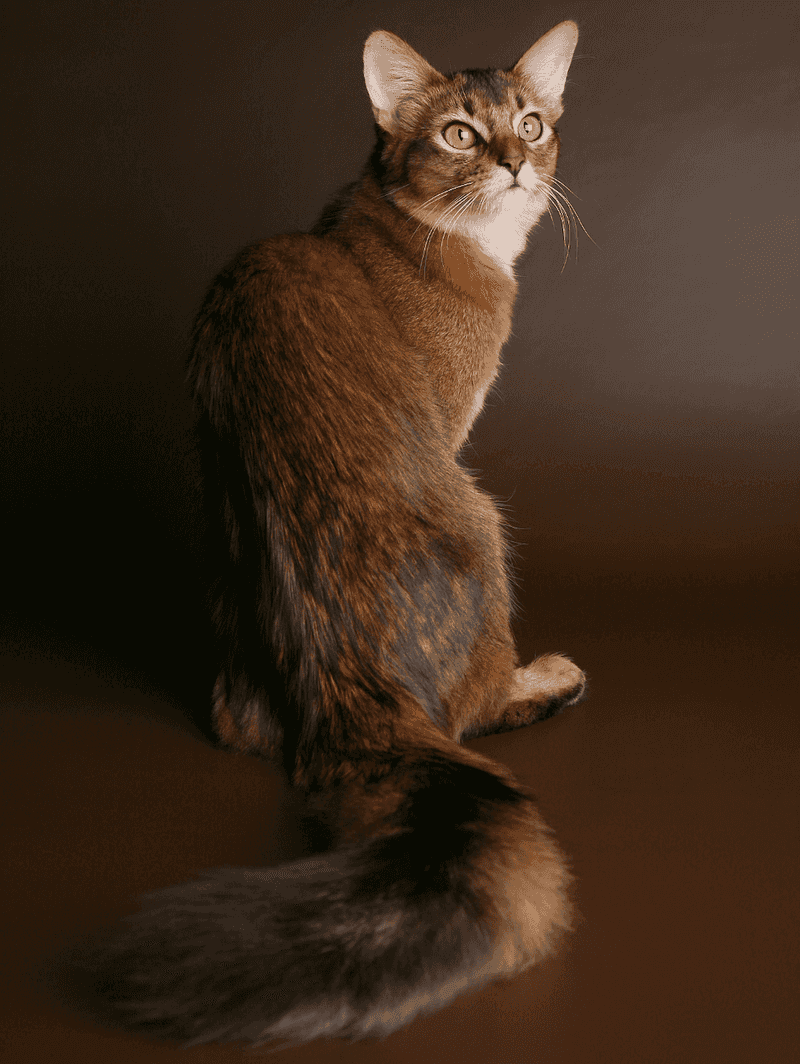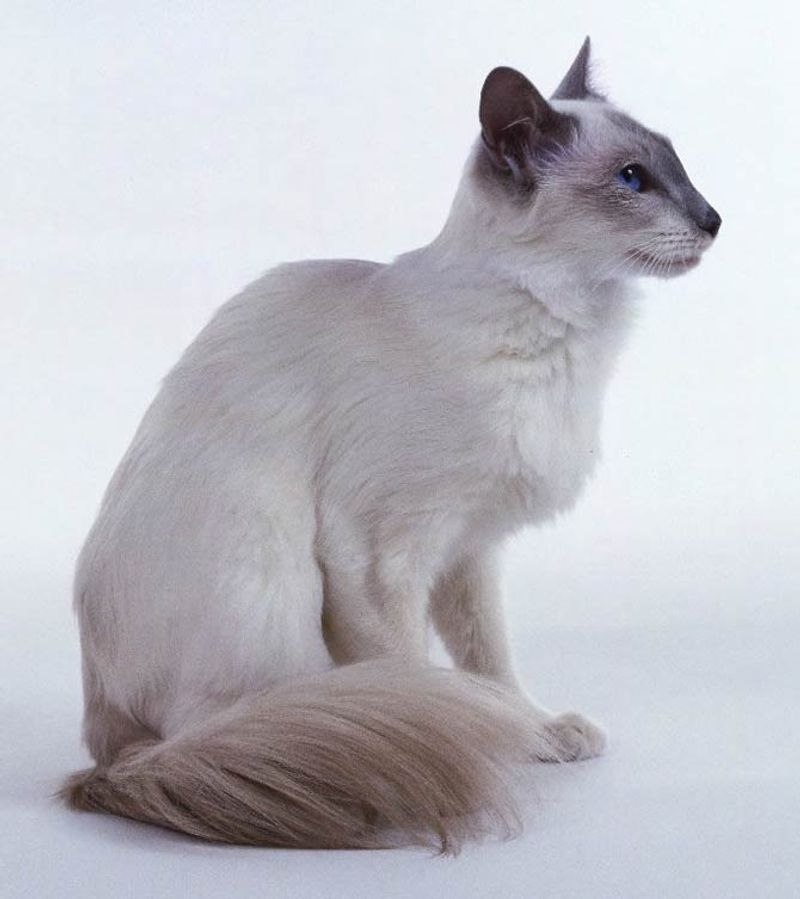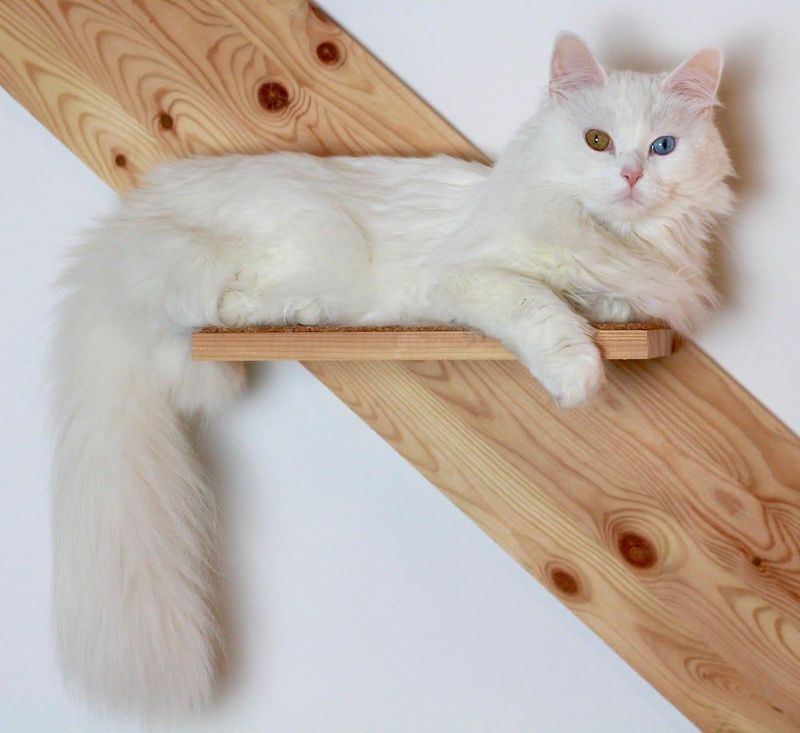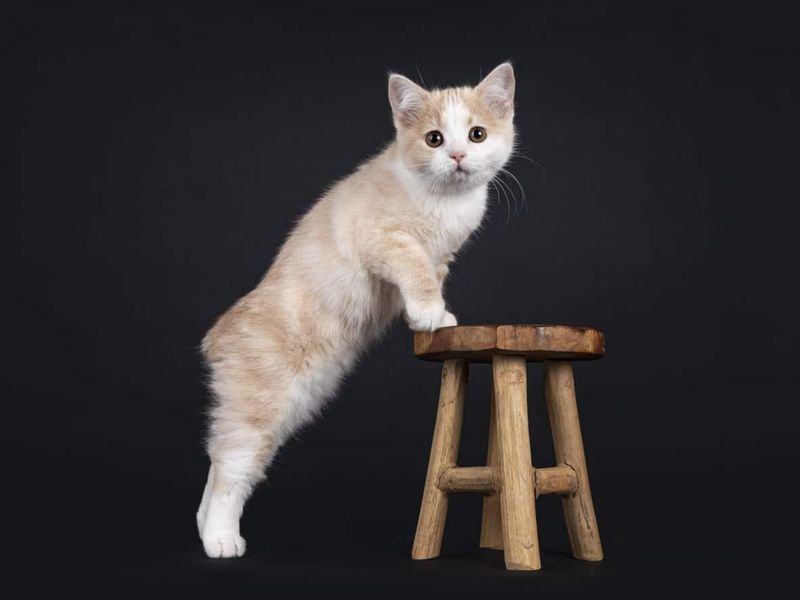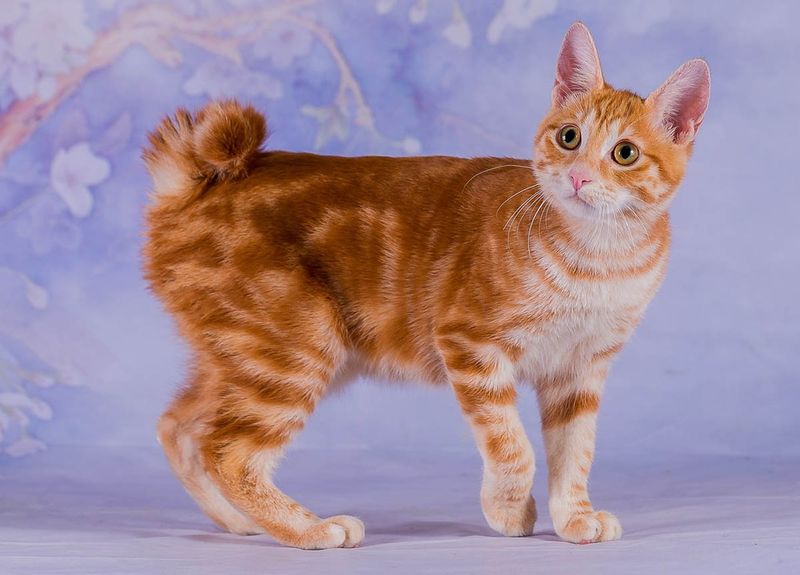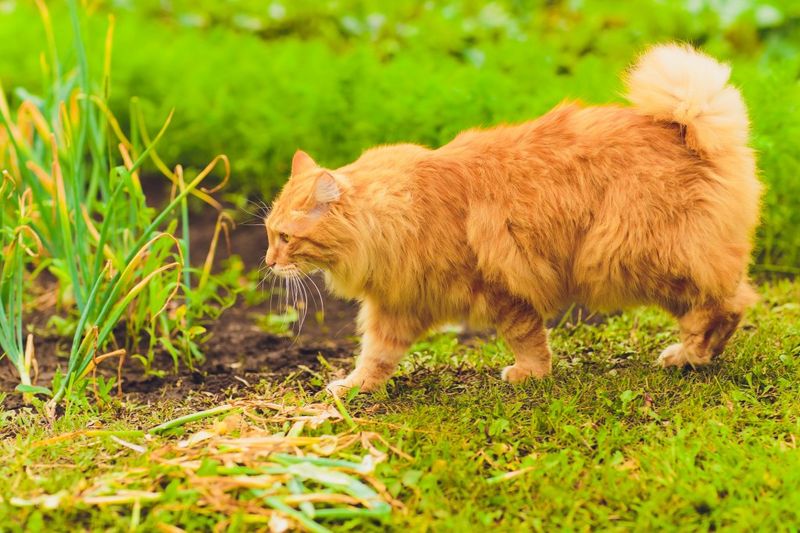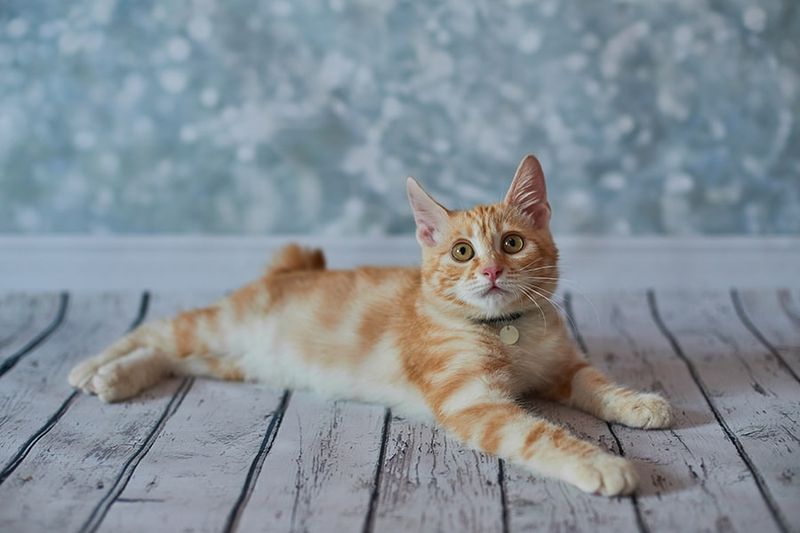📖 Table of Content:
When it comes to cats, tails aren’t just a body part — they’re a statement. From fluffy plumes that sway like royalty’s train to cute little bobbles that look like they were clipped from a pom-pom hat, feline tails are one of nature’s most charming accessories. Whether they’re used for balance, communication, or just pure aesthetic flair, a cat’s tail is a window into its personality.
Some breeds flaunt tails so grand, they look like they belong on a fantasy creature — long, luxurious, and impossible to miss. Others are all about that stubby swagger, rocking their miniature fluff like a signature look. These variations aren’t just adorable; they’re rooted in fascinating histories, natural mutations, and centuries of selective breeding.
In this whiskered deep-dive, we’ll explore four cat breeds with tails that flow like velvet ribbons and four whose pom-pom butts could melt even the coldest hearts. So whether you’re into dramatic drapes or cutesy stubs, get ready to meet eight cats whose rear ends deserve a standing ovation. Let’s start with the tail royalty before hopping into the world of cotton-ball charmers.
1. Maine Coon
Towering in both size and tail stature, the Maine Coon is a true legend in the feline world. Its tail, often just as long as its body, boasts a fullness that rivals a raccoon’s — hence the name. This majestic appendage isn’t just for show: it’s used as a built-in blanket during chilly weather, especially helpful for this breed’s northern origins. You’ll often catch them wrapping their tail around themselves like a scarf, adding to their regal vibe. The tail fur is thick, layered, and often tipped in darker shades, creating a soft ombré effect. Combined with their tufted ears and shaggy coat, the tail completes their lumberjack-meets-lion aesthetic. Few cats carry their tail with such elegant weight and wild beauty.
2. Somali
Nothing says “wild elegance” quite like the Somali and its famously foxy tail. With fur that cascades in silken waves, it looks as if it was styled by a high-end groomer. Descended from the Abyssinian, this breed inherited both smarts and flair, but the Somali’s tail takes the spotlight every time. It serves as the visual anchor for its agile, muscular frame — like punctuation on a graceful sentence. These tails aren’t just long, they’re expressive: they curl, flick, and sway with precision. Their coloration often includes bands of rich reds, warm browns, and golds, adding to the dramatic flair. If elegance and mischief had a baby, the Somali’s tail would be it.
3. Balinese
Graceful and whisper-soft, the Balinese tail feels more like a paintbrush than a body part. This long-haired cousin of the Siamese carries all the elegance of its lineage with added glam thanks to its tail. Fine, flowing fur gives the tail a cloud-like silhouette as it trails behind the cat’s lithe body. In motion, it fans out like a plume, softening every leap and land with a hint of drama. Balinese cats often hold their tails high, as if to say, “Yes, I am that fabulous.” The texture is silky, never woolly, which contributes to the breed’s almost ethereal presence. Every step this breed takes is elevated by the brushstroke of its tail behind it.
4. Turkish Angora
Floating like a snowflake, the Turkish Angora’s tail is its crowning glory. Feather-light and exquisitely plumed, it matches the grace of the breed’s overall frame. These cats are often seen with coats of white, silver, or cream, which adds to the ethereal vibe of their fan-like tail. It’s common for them to twirl their tails with flair when playing or stretching, showcasing the fur’s flow. Unlike heavier breeds, Angoras have an airy, ballerina-like elegance that makes their tails look like they’re in constant motion. During cooler months, their tail fur thickens even more, enhancing the already dramatic silhouette. With a legacy tied to Turkish royalty, it’s no wonder their tails seem built for palaces.
1. Manx
Defined by what it doesn’t have, the Manx’s tail — or lack thereof — is an iconic trait. Hailing from the Isle of Man, this breed comes in a variety of tail lengths, from full “rumpies” (tailless) to “stumpies” with a small nub. That tiny puff is more than just cute — it’s the result of a natural mutation passed down over generations. Manx cats are incredibly balanced and agile, defying the idea that tails are essential for coordination. Their round rear adds to their unique, bunny-like appearance, making them instant conversation starters. With a sturdy build and dog-like loyalty, they’ve got more going on than just a funny butt. But let’s be real — it’s the pom-pom that steals the show.
2. Japanese Bobtail
Steeped in folklore and tradition, the Japanese Bobtail is more than just a cute face and a puff. Its distinctive tail is a short, kinked corkscrew that’s completely unique to each cat — no two are alike. Often compared to a rabbit’s tail, it gives this breed a playful, animated vibe. In Japan, they’re seen as lucky charms, especially in their “maneki-neko” form (that beckoning cat statue). Despite their short tails, these cats are agile jumpers and energetic athletes. The fur on their pom-pom tends to spike in all directions, giving it a starburst look. Every wiggle of their tail seems infused with charm and tradition.
3. Kurilian Bobtail
Hailing from the icy Kuril Islands between Russia and Japan, the Kurilian Bobtail carries its stubby tail like a badge of wild honor. This breed evolved naturally in a rugged environment, and its tail reflects that — thick, short, and often curled or kinked. Covered in dense fur, the pom-pom tail almost looks like a snowball tucked behind them. These cats are known for being powerful and water-loving, which is rare in the feline world. Unlike delicate breeds, the Kurilian has a robust body that contrasts adorably with its fluffy little nub. Each tail is uniquely shaped, giving them a distinct “fingerprint.” It’s like a little mystery bundled in fur.
4. American Bobtail
Sturdy and expressive, the American Bobtail wears its short tail with boldness. These cats have a tail that typically spans 1 to 4 inches, often slightly curved or kinked. Despite its brevity, the tail is incredibly communicative — wagging, twitching, and curling to match their moods. This breed looks like a miniature lynx, with wild facial markings and a rugged frame. Their tail may be short, but it’s packed with personality and movement. American Bobtails are known for their social smarts and dog-like behavior, making them great companions. One look at their stubby tail and you’ll know: this is not your average housecat.
